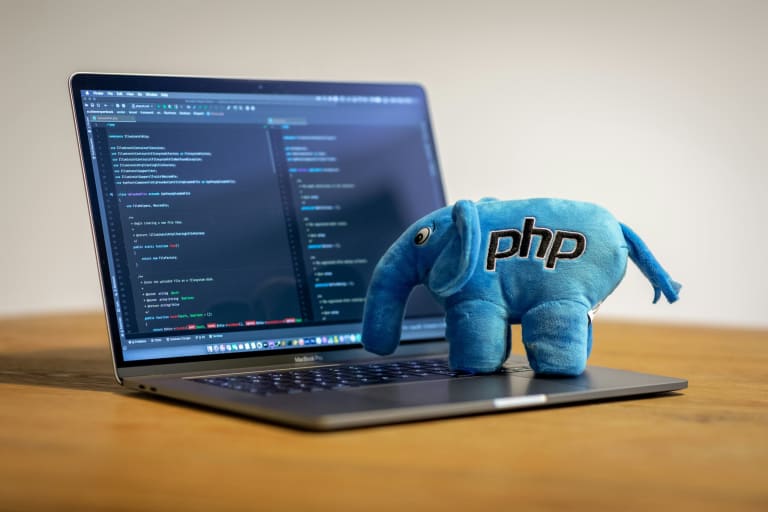PHP Turns 30: From Personal Project to Global Powerhouse
In 1995, Rasmus Lerdorf wrote a few scripts to track visits to his online resume. That side project evolved into PHP, a scripting language that today powers over 75% of websites with a known backend.
Now in 2025, PHP turns 30. Here’s how it went from a personal tool to a foundational part of the modern web.
The Early Days (1995–2000)
- 1995: PHP/FI (“Personal Home Page / Forms Interpreter”) is released.
- 1998: PHP 3 introduces extensibility and a proper parser.
- 2000: PHP 4 arrives with the Zend Engine, bringing real performance gains.
PHP’s early adoption was driven by its ease of use. No compilers, no build steps—just embed and run.

The Maturing Years (2000–2014)
PHP 5 (2004) redefined the language with major improvements:
- Object-oriented programming
- Improved XML and SOAP support
- PDO for safe, flexible database access
During this period, PHP became the foundation for platforms such as WordPress (2003), Facebook (initially PHP-based), Drupal, and Joomla.
Frameworks Bring Structure
To support scalable applications, PHP frameworks introduced consistent architecture and tooling.
- Laravel – elegant syntax and rich ecosystem
- Symfony – component-based and enterprise-ready
- CodeIgniter – minimal and fast
- Laminas – built for high-scale applications
These frameworks standardized MVC structure, routing, middleware, and RESTful API design.
PHP 7 to 8.4: Performance and Modern Features
PHP 7 (2015)
- Significant performance improvements
- Scalar and return type declarations
- Better error handling
PHP 8.0 (2020)
- Just-in-Time (JIT) compilation
- Named arguments and attributes
- Union types
PHP 8.1 – 8.3
- Enums
- Fibers for asynchronous programming
- Readonly properties
- First-class callable syntax
PHP 8.4 (2024)
- Class constants in traits
- Dynamic class constant fetching
- Performance and syntax improvements
PHP 8.x is fast, modern, and capable of powering complex applications at scale.
The Ecosystem: Open Source and Real-World Impact
PHP has one of the largest open-source ecosystems, with thousands of contributors and millions of developers using its tools daily.
- Laravel – 75,000+ stars on GitHub
- Symfony – modular and reusable components
- PHPUnit – the standard for testing
- Composer – dependency management
- Monolog – robust logging
Major websites and platforms like WordPress, Wikipedia, Etsy, and Mailchimp rely on PHP to this day.
Packagist hosts over 360,000 PHP packages, with new tools and libraries added daily.
PHP in 2025 and Beyond
PHP remains the most used server-side language in the world. It is supported by a mature ecosystem, modern development tools, and wide hosting compatibility.
- Supported by all major cloud providers
- Works well with Nginx, Apache, MySQL, PostgreSQL, Redis
- Strong ecosystem for CI/CD, testing, and monitoring
Frequently Asked Questions
Is PHP still relevant in 2025?
Yes. PHP is still widely used for CMSs, APIs, and full-stack applications—especially with Laravel and WordPress.
Should I learn PHP today?
Definitely. PHP has a low entry barrier, a huge job market, and powers a large percentage of the internet.
Is PHP fast enough for modern apps?
Yes. Since PHP 7, performance has dramatically improved. PHP 8+ competes with modern languages in speed.
What backend stack pairs well with PHP?
- Nginx or Apache
- PHP-FPM
- MySQL or PostgreSQL
- Optional: Redis, Docker, Cloudflare, GitHub Actions
Which IDEs support PHP best?
- PHPStorm – full-featured and reliable
- Visual Studio Code – lightweight with Intelephense
- Neovim – for advanced users using LSP plugins
Conclusion
From a personal tool to one of the most used languages in web development, PHP’s 30-year journey is a story of adaptability and community-driven evolution.
With modern features, strong frameworks like Laravel, and massive industry adoption, PHP is still going strong—and is ready for the next 30 years.